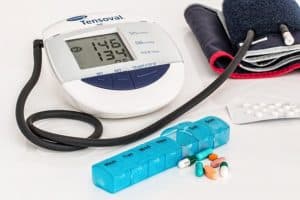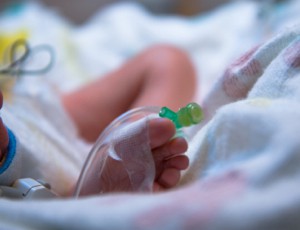Central venous catheter care and maintenance in UK haemodialysis units

“A questionnaire was emailed to all other children’s haemodialysis units in the UK, which identified variations in practice and training” Barrett et al (2020).
Central venous catheter insertion in the prone position for critically ill COVID-19 patients

“We demonstrated feasibility of central venous catheter insertion in the prone position in these severely ill patients” Yang and Ng (2020).
Clinical experience of implementing oral versus intravenous antibiotics for bone infections – Full Text

“The OVIVA trial findings can be safely implemented into clinical practice when patients on oral antibiotics are followed up by an established OPAT service” Azamgarhi et al (2020).
Factors contributing to needle stick injuries among new registered nurses

“Avoidable practices such as non-adherence to standard precautions while using hypodermic needles contributed to NSIs” Kwanzaa et al (2020).
Risk of complications after peripheral norepinephrine infusion

“In the current database analysis, no significant association was found between the use of peripheral intravenous norepinephrine infusions and adverse events” Pancaro et al (2020).
Impact of interprofessional multitiered daily rounding management on CLABSI rates

“There were no reportable central line-associated blood stream infection (CLABSI) or catheter-associated urinary tract infection (CAUTI)” Eamranond et al (2020).
Video-assisted informed consent and patient education for PICC placement

“To evaluate the effects of a video-assisted education intervention on informed consent and patient education for peripherally inserted central catheters” Li et al (2020).
Slippery liquid infused fluoropolymer coating for central venous catheters – Full Text

“We report an antibiotic-free, fluoropolymer-immobilized, liquid perfluorocarbon-coated peripherally inserted central catheter (PICC) line and its effectiveness in reducing catheter associated thrombosis and pathogen colonization” Bandyopadhyay et al (2020).
Retained fragments of CVC and late fatal central venous catheter sepsis

“This case shows that these retained intravascular fragments can cause fatal complications on the long-term” Ottevanger et al (2020).
Placement of hemodialysis catheters with micropuncture technique Full Text

“Tunneled dialysis catheter placement through the occluded internal jugular and subclavian veins with micropuncture technique is effective and safe” Bİrgİ et al (2020).
Persistent left superior vena cava case study

“This report describes the incidental discovery of a persistent left superior vena cava emptying into a pulmonary vein” Milam et al (2020).
Impact of tai chi on PICC management and quality of life – Full Text

“Tai chi can prevent PICC thrombosis, reduce PICC-related complications, improve selfmanagement ability, and improve quality of life in at-home patients with long-term PICC” Ding et al (2020).
Effectiveness of chlorhexidine dressings to prevent CRBSI

“To evaluate the effectiveness of chlorhexidine (CHG) dressings to prevent catheter-related bloodstream infections (CRBSIs)” Puig-Asensio et al (2020).
Comparison of hydrophobic polyurethane and polyurethane PICC

“To evaluate the feasibility of an efficacy trial comparing a hydrophobic polyurethane peripherally inserted central catheter (PICC) with a standard polyurethane PICC”
Nurse-administered propofol continuous infusion sedation

“NAPCIS seems to be a safe and effective means of providing sedation for endoscopy to patients who may be difficult to sedate” Lee et al (2020).
Acknowledging the nature of peripheral intravenous catheter care

“This article describes the most important aspects of the indications, puncture and fixation techniques as well as special features in terms of management and hygiene” Schalk et al (2020).
Emergency vascular access in newborn infants in the delivery room – Full Text

“Venous access during neonatal emergencies in the delivery room (DR) can be accomplished through an umbilical venous catheter (UVC) or an intraosseous (IO) access” Haase et al (2020).
Clinical performance associated with subclavian vein catheterization – Full Text

“The csSCV was significantly larger in patients placed in the ipsilateral tilt than in the supine position, but the difference did not result in better clinical performance of landmark-based subclavian vein catheterization” Yoon et al (2020).
Learner-guided ultrasound simulator for central venous access training

“A moderate-fidelity central venous access simulator can be constructed in a cost-effective manner, which can be optimized to the learner skill level” Harrington et al (2020).
Outpatient parenteral antimicrobial therapy with ceftriaxone for MSSA BSI

“For patients with MSSA BSI discharged on OPAT, within the limitations of the small numbers and retrospective design we did not find a significant difference in outcomes” Hamad et al (2020).
Quality improvement initiative to reduce neonatal CLABSI

“While neonates often require prolonged central venous access and suffer from impaired immunity which increases the risk of CLABSI, this review demonstrates the journey to zero is feasible” Pearlman (2020).
Predicting difficult vascular access in the pediatric perioperative population – Full Text

“Patient and procedural characteristics were perceived to increase the likelihood of DPIV cannulation with no difference among respondents” Hakim et al (2020).
Central venous catheter fracture leading to TPN extravasation

“We present a case utilizing contrast-enhanced ultrasound (CEUS) at the bedside to assess catheter integrity in a critically ill infant with a large intra-abdominal fluid collection” Cahill et al (2020).
Biotin regulates colonization and growth of Candida albicans in central catheter lumen

“In this study, we examined the effect of biotin on the colonization and growth of Candida albicans in the lumen of the catheter used for nutrient infusions” Ohara et al (2020).
How complicated central catheterization was interpreted at autopsy

“Therapeutic artefacts are a challenge for forensic pathologists for correct interpretation at autopsy” Rajanikanta et al (2020).
Efficient use of intravenous lumens in multi-infusion settings – Full Text

“The multiplex algorithm allows for more efficient use of IV lumens compared to the conventional multi-infusion strategy” Doesburg et al (2020).
Infusion phlebitis among low birth weight infants – Full Text

“The most significant risk factor of phlebitis was the nurses’ clinical experience of intravenous insertion (< 2 years)" Yuningsih et al (2020).
Effect of silver ion dressing on CLABSI rates in severe burn patients

“To investigate the influence of silver ion dressing on related infections induced by inserted central venous catheter through wounds in patients with severe burn” Li et al (2020).
Clinical impact of early reinsertion of a central catheter post CLABSI

“We evaluated the clinical impact of early CVC reinsertion after catheter removal in patients with CRBSIs”
Treatment of air embolism related to intravenous infusion

“Vascular air embolism (VAE) is an important complication of some routine medical procedures, particularly intravenous access for the administration of fluids” Trent et al (2020).

